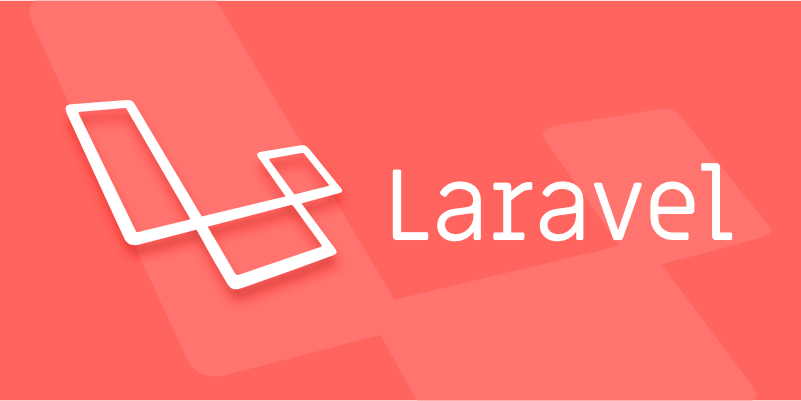Laravel middleware is a filtering layer that handles HTTP requests, which is used to uniformly process logic before the request reaches the controller. It is suitable for scenarios such as authentication, permission control, logging, cross-domain processing and current limiting. To create custom middleware, you can use the Artisan command: 1. Execute php artisan make:middleware CheckToken to generate middleware; 2. Write logic in the handle method, such as verifying the request header token; 3. Register the middleware, and add it to the Kernel's $middleware array for global use, and register it to $routeMiddleware and specify it in the route. For example, the current limiting middleware can combine Redis to implement request frequency control. Pay attention to: 1. Register as needed to avoid unnecessary performance losses; 2. The middleware execution order affects the logic process; 3. Retrieve general logic to improve reusability; 4. Avoid time-consuming operations in the middleware.

Laravel middleware is an excellent tool for handling requests and responses, especially when certain logic needs to be handled uniformly. For example, in scenarios such as verification, logging, permission control, etc., middleware can play a good role.

What is middleware?
Simply put, middleware is a layer for filtering HTTP requests. You can think of it as a pipeline, and every request passes here before it comes in, and you can do something before it reaches the controller, such as checking whether the user is logged in, logging access logs, setting the locale, etc.

Laravel comes with some commonly used middleware, such as auth , csrf , throttle , etc. Of course, you can also create custom middleware according to your business needs.
How to create and use custom middleware?
Creating middleware in Laravel is very simple, you just need to run the Artisan command:

php artisan make:middleware CheckToken
This command will generate a middleware file in app/Http/Middleware directory. Then you can write your logic in it. For example, determine whether there is a token in the request header:
public function handle($request, Closure $next)
{
if (!$request->header('Authorization')) {
return response('Missing token', 401);
}
return $next($request);
} After creation is complete, don't forget to register the middleware. If it is global middleware, add it to the $middleware array of app/Http/Kernel.php ; if you only want to take effect on certain routes, add it to $routeMiddleware and use it through the route.
For example, in routing:
Route::get('/api/data', [DataController::class, 'index'])->middleware('check.token');
What can middleware do?
There are actually quite a lot of scenarios that middleware is suitable, and the common ones are as follows:
- Authentication : For example, check whether the user is logged in or whether the token is valid.
- Permission control : For example, restrict some interfaces to be accessed only by administrators.
- Logging : Records the time, IP, parameters and other information of each request.
- Cross-domain processing (CORS) : Although Laravel provides configuration methods, it can also be flexibly processed using middleware.
- Current limit : Prevent the interface from being called frequently, such as up to 60 requests per minute.
For example, if you want to make a stream-limiting middleware, you can combine Redis to record the number of requests:
public function handle($request, Closure $next)
{
$key = 'rate_limit_' . $request->ip();
$count = Redis::get($key);
if ($count >= 60) {
return response('Too many requests', 429);
}
Redis::incr($key);
Redis::expire($key, 60); // Reset return $next($request);
}This approach is more flexible and controllable than simply relying on the throttle that comes with the framework.
Tips and notes
- If middleware is only used for specific routes, it is recommended to register as routing middleware instead of global middleware to avoid affecting other interfaces.
- There is an order between multiple middlewares, and the execution order is to enter from top to bottom and then return from bottom to top.
- Some general logic can be extracted and made into reusable middleware to improve the cleanliness of the code.
- Don't do too many time-consuming operations in middleware, such as large number of database queries or complex calculations, which will affect performance.
Basically that's it. Middleware is a very practical function. If used properly, it can greatly improve the structural clarity and maintainability of the project.
The above is the detailed content of Using Middleware for Request Handling in Laravel?. For more information, please follow other related articles on the PHP Chinese website!

Hot AI Tools

Undress AI Tool
Undress images for free

Undresser.AI Undress
AI-powered app for creating realistic nude photos

AI Clothes Remover
Online AI tool for removing clothes from photos.

Clothoff.io
AI clothes remover

Video Face Swap
Swap faces in any video effortlessly with our completely free AI face swap tool!

Hot Article

Hot Tools

Notepad++7.3.1
Easy-to-use and free code editor

SublimeText3 Chinese version
Chinese version, very easy to use

Zend Studio 13.0.1
Powerful PHP integrated development environment

Dreamweaver CS6
Visual web development tools

SublimeText3 Mac version
God-level code editing software (SublimeText3)

Hot Topics
 What are routes in Laravel, and how are they defined?
Jun 12, 2025 pm 08:21 PM
What are routes in Laravel, and how are they defined?
Jun 12, 2025 pm 08:21 PM
In Laravel, routing is the entry point of the application that defines the response logic when a client requests a specific URI. The route maps the URL to the corresponding processing code, which usually contains HTTP methods, URIs, and actions (closures or controller methods). 1. Basic structure of route definition: bind requests using Route::verb('/uri',action); 2. Supports multiple HTTP verbs such as GET, POST, PUT, etc.; 3. Dynamic parameters can be defined through {param} and data can be passed; 4. Routes can be named to generate URLs or redirects; 5. Use grouping functions to uniformly add prefixes, middleware and other sharing settings; 6. Routing files are divided into web.php, ap according to their purpose
 What are policies in Laravel, and how are they used?
Jun 21, 2025 am 12:21 AM
What are policies in Laravel, and how are they used?
Jun 21, 2025 am 12:21 AM
InLaravel,policiesorganizeauthorizationlogicformodelactions.1.Policiesareclasseswithmethodslikeview,create,update,anddeletethatreturntrueorfalsebasedonuserpermissions.2.Toregisterapolicy,mapthemodeltoitspolicyinthe$policiesarrayofAuthServiceProvider.
 How do I create new records in the database using Eloquent?
Jun 14, 2025 am 12:34 AM
How do I create new records in the database using Eloquent?
Jun 14, 2025 am 12:34 AM
To create new records in the database using Eloquent, there are four main methods: 1. Use the create method to quickly create records by passing in the attribute array, such as User::create(['name'=>'JohnDoe','email'=>'john@example.com']); 2. Use the save method to manually instantiate the model and assign values ??to save one by one, which is suitable for scenarios where conditional assignment or extra logic is required; 3. Use firstOrCreate to find or create records based on search conditions to avoid duplicate data; 4. Use updateOrCreate to find records and update, if not, create them, which is suitable for processing imported data, etc., which may be repetitive.
 How do I run seeders in Laravel? (php artisan db:seed)
Jun 12, 2025 pm 06:01 PM
How do I run seeders in Laravel? (php artisan db:seed)
Jun 12, 2025 pm 06:01 PM
Thephpartisandb:seedcommandinLaravelisusedtopopulatethedatabasewithtestordefaultdata.1.Itexecutestherun()methodinseederclasseslocatedin/database/seeders.2.Developerscanrunallseeders,aspecificseederusing--class,ortruncatetablesbeforeseedingwith--trunc
 What is the purpose of the artisan command-line tool in Laravel?
Jun 13, 2025 am 11:17 AM
What is the purpose of the artisan command-line tool in Laravel?
Jun 13, 2025 am 11:17 AM
Artisan is a command line tool of Laravel to improve development efficiency. Its core functions include: 1. Generate code structures, such as controllers, models, etc., and automatically create files through make: controller and other commands; 2. Manage database migration and fill, use migrate to run migration, and db:seed to fill data; 3. Support custom commands, such as make:command creation command class to implement business logic encapsulation; 4. Provide debugging and environment management functions, such as key:generate to generate keys, and serve to start the development server. Proficiency in using Artisan can significantly improve Laravel development efficiency.
 How do I install Laravel on my operating system (Windows, macOS, Linux)?
Jun 19, 2025 am 12:31 AM
How do I install Laravel on my operating system (Windows, macOS, Linux)?
Jun 19, 2025 am 12:31 AM
Yes,youcaninstallLaravelonanyoperatingsystembyfollowingthesesteps:1.InstallPHPandrequiredextensionslikembstring,openssl,andxmlusingtoolslikeXAMPPonWindows,HomebrewonmacOS,oraptonLinux;2.InstallComposer,usinganinstalleronWindowsorterminalcommandsonmac
 How do I define methods (actions) in a controller?
Jun 14, 2025 am 12:38 AM
How do I define methods (actions) in a controller?
Jun 14, 2025 am 12:38 AM
Defining a method (also known as an action) in a controller is to tell the application what to do when someone visits a specific URL. These methods usually process requests, process data, and return responses such as HTML pages or JSON. Understanding the basic structure: Most web frameworks (such as RubyonRails, Laravel, or SpringMVC) use controllers to group related operations. Methods within each controller usually correspond to a route, i.e. the URL path that someone can access. For example, there may be the following methods in PostsController: 1.index() – display post list; 2.show() – display individual posts; 3.create() – handle creating new posts; 4.u
 How do I run tests in Laravel? (php artisan test)
Jun 13, 2025 am 12:02 AM
How do I run tests in Laravel? (php artisan test)
Jun 13, 2025 am 12:02 AM
ToruntestsinLaraveleffectively,usethephpartisantestcommandwhichsimplifiesPHPUnitusage.1.Setupa.env.testingfileandconfigurephpunit.xmltouseatestdatabaselikeSQLite.2.Generatetestfilesusingphpartisanmake:test,using--unitforunittests.3.Writetestswithmeth






